Species V. × heilbornii Rank Hybrid | ||
 | ||
Similar Water, Colada morada, Naranjilla, Sugar, Tamarillo | ||
Babaco taste test
The Babaco (Vasconcellea × heilbornii; syn. Carica pentagona), is a hybrid cultivar in the genus Vasconcellea from Ecuador. It is a hybrid between Vasconcellea cundinamarcensis (syn. Carica pubescens, "Mountain Papaya".), and Vasconcellea stipulata (syn. Carica stipulata, "Toronche".).
Contents
- Babaco taste test
- Grafted babaco tree better in cold climates in australia
- Growth
- Characteristics
- References
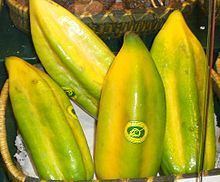
Grafted babaco tree better in cold climates in australia
Growth
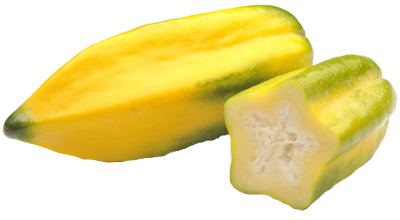
It can grow at high altitudes (over 2,000 m), and is the most cold-tolerant plant in the genus Vasconcellea. The babaco is classified as a herbaceous shrub like Carica papaya (pawpaw or papaya) but unlike papaya it produces only female flowers. The babaco plant can produce from 30–60 fruits annually, and has an average life span of about eight years. The small plant is better suited as a container specimen than its cousin the papaya, which needs constant moisture and high temperatures to survive.
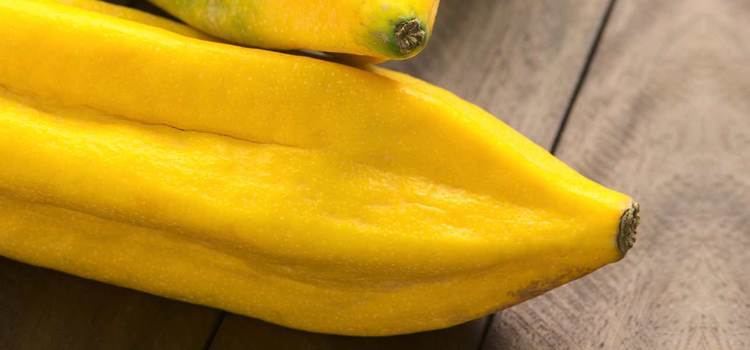
The babaco is suitable for greenhouse cultivation were it produce high-quality fruit with soft edible skin. The plant is easy to cultivated under greenhouse conditions (Kempler et al., 1993). Propagation of the plant is achieved by rooting axillary shoot. stem section root poorly. The opening of axillary buds and subsequent shoot growth is stimulated by removing the apical meristem. The shoots are cut at 15–25 cm long and only the apical leaf is kept. The basal area of the stem is mildly injured and dipped in 0.4% IBA rooting powder and planted into suitable rooting media such as peat:perlite:sand and place under intermittent mist. cutting can be ready for transplanting within 3 week.
In contrast to the tropical papaya, babaco required a cool subtropical climate. Recommended greenhouse minimum temperature of 10 °C at night, 12 °C during the day, and 18 °C for fruit to ripe quickly and uniformly. Excessively low temperatures cause fruit to mature with rough pitted skin.
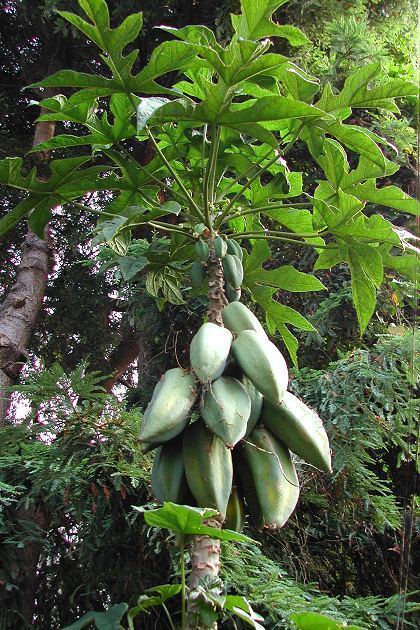
The flowering habit is indeterminate. Under greenhouse conditions, plant growth during winter month (October- March at 49°N) is slow, and flowers senesce and fail to set fruit (Kempler et al., 1993). In Ecuador, the trees begin to cropping 10 months after planting and continue bearing for 6 months, producing about 40 fruit/tree with each weighing about 1-1.5 kg, in the greenhouse we produced about 32 kg fruit per square meter in 16 months when planted 0.8 plants per sq. meter, and 25 kg sq. meter after 12 months space at 3 plants sq. meter. Because of the have fruit load a support system for the plants was required. Small fruit size can be achieve by growing plants at high densities. fruit begins to mature with gradual color change from green to yellow and if harvest it delayed, the fruit stalk will abscise and fruit will drop and bruise. The delicate-skinned fruit is harvested with pruners with a short stalk and handled carefully. In northern climate, ripening begin in November (March planting), and continue until June. During this period new flowers are set (April–September) and the second crop start to rip in November, the plant is cut above the last-formed fruit as flower senesce in October. after the end of the second season cropping plant can be cut and rejuvenated from the base or replaced with new plants.
Characteristics
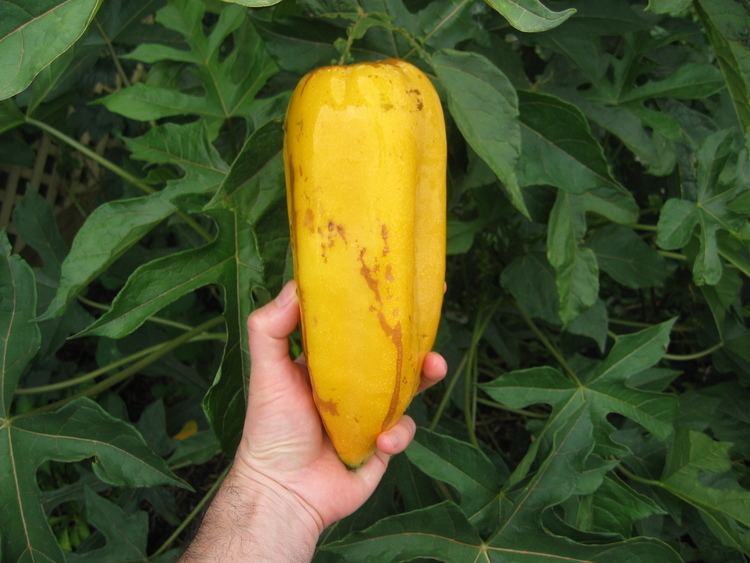
It is a small, unbranched or sparsely branched tree reaching 5–8 m tall. The fruit differs from the related papaya (C. papaya) in being narrower, typically less than 10 cm in diameter. The babaco fruit is seedless and the smooth skin can be eaten, and is said to have tastes of strawberry, papaya, kiwi and pineapple. The fruit is pentagonal in shape, therefore giving it the scientific name of Carica pentagona. The fruit is not especially acidic, but contains papain, a proteolytic enzyme, which may cause mild irritation or "burns".
Like the papaya, the babaco is grown for its edible fruit and for its fruit juice. Cultivation away from its native range has been successful as far south as New Zealand, and as far north as California, some regions of England, Guernsey, Channel Islands, and somewhat also in Italy (mostly Sicily and Calabria).
